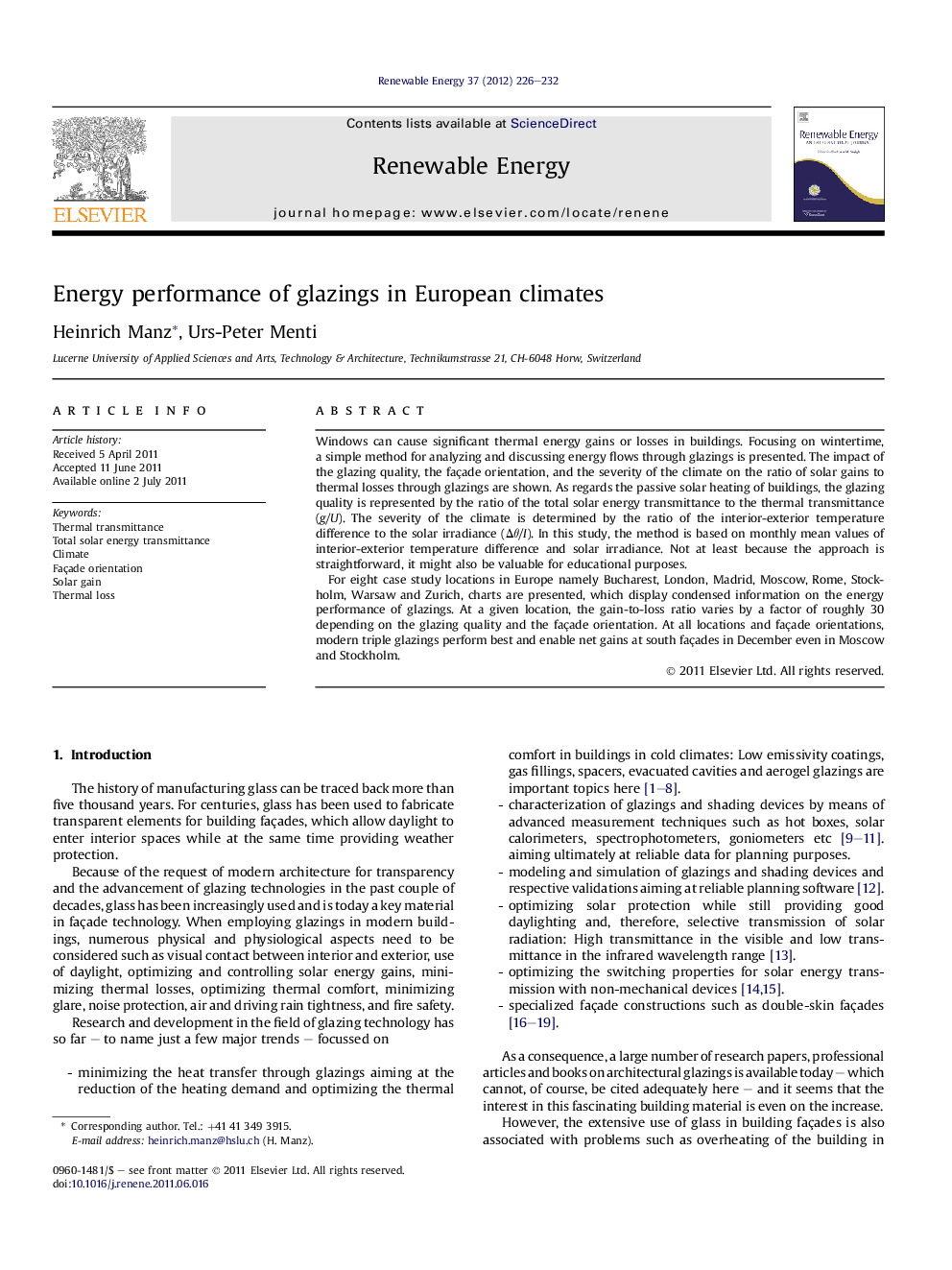| Article ID | Journal | Published Year | Pages | File Type |
|---|---|---|---|---|
| 301393 | Renewable Energy | 2012 | 7 Pages |
Windows can cause significant thermal energy gains or losses in buildings. Focusing on wintertime, a simple method for analyzing and discussing energy flows through glazings is presented. The impact of the glazing quality, the façade orientation, and the severity of the climate on the ratio of solar gains to thermal losses through glazings are shown. As regards the passive solar heating of buildings, the glazing quality is represented by the ratio of the total solar energy transmittance to the thermal transmittance (g/U). The severity of the climate is determined by the ratio of the interior-exterior temperature difference to the solar irradiance (Δθ/I). In this study, the method is based on monthly mean values of interior-exterior temperature difference and solar irradiance. Not at least because the approach is straightforward, it might also be valuable for educational purposes.For eight case study locations in Europe namely Bucharest, London, Madrid, Moscow, Rome, Stockholm, Warsaw and Zurich, charts are presented, which display condensed information on the energy performance of glazings. At a given location, the gain-to-loss ratio varies by a factor of roughly 30 depending on the glazing quality and the façade orientation. At all locations and façade orientations, modern triple glazings perform best and enable net gains at south façades in December even in Moscow and Stockholm.
► Glazings can cause significant thermal energy gains or losses in buildings. ► Energy performance is determined by glazing quality and the severity of the climate. ► For eight case study locations in Europe results are presented.
